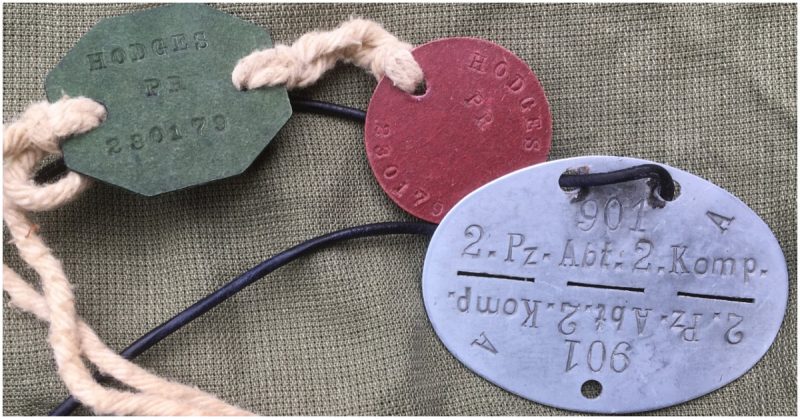These were metal discs on a bracelet which held the name of the soldier, their rank, and their formation.
Dog tags and the military are linked in everyone’s mind. Military personnel carry them as identification and a reminder of what can be lost in the call of duty. While dog tags are a staple of the modern military, they were not always in the shape that we are used to.
The use of dog tags by a military force can be dated back to ancient Rome. Roman legionnaires were provided with a signaculum when they enrolled. This was a lead disc which was inscribed with the name of the legionnaire and which legion they were a part of.
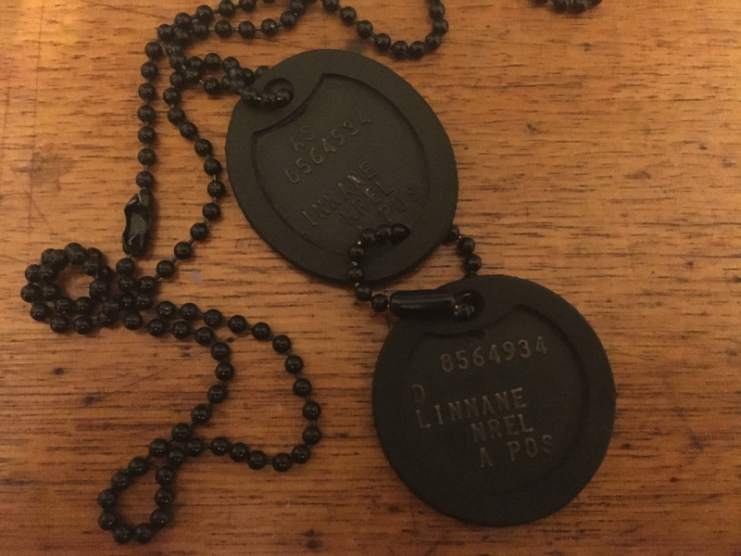
Date 14 May 2017
The disc was placed in a small leather pouch that each soldier wore around his neck. Each signaculum had a seal stamped into it to authenticate them. The Spartan army also used dog tags, but these were made of wood and worn around the wrist.
In terms of modern warfare, dog tags can be dated back to the American Civil War. During the war, there was no official way to identify all of the fallen. By the end of the war, more than 40% of all fallen soldiers would remain unidentified and interred as unknown.
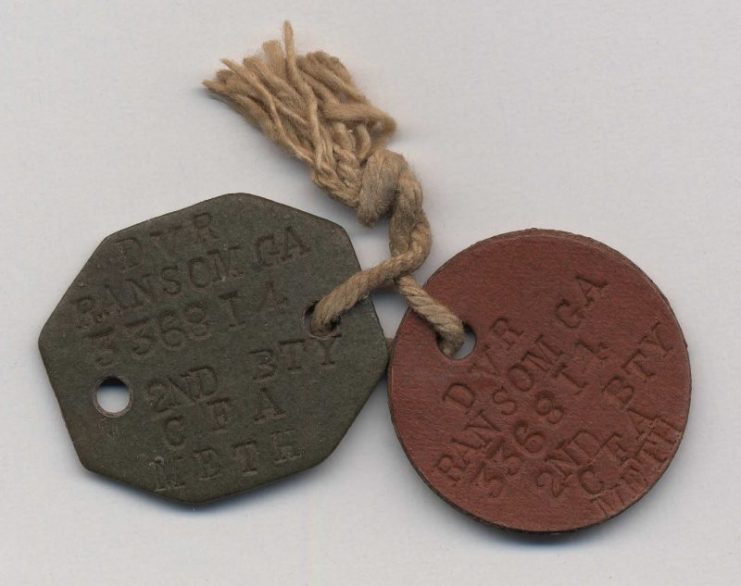
In May 1862, Edwin Stanton, the Secretary of War, received a letter from John Kennedy of New York. In the letter, Kennedy suggested that all Union soldiers be provided with an identification tag to help identify the fallen and alert their families. This request was denied, and soldiers had to turn to homemade methods of identification.
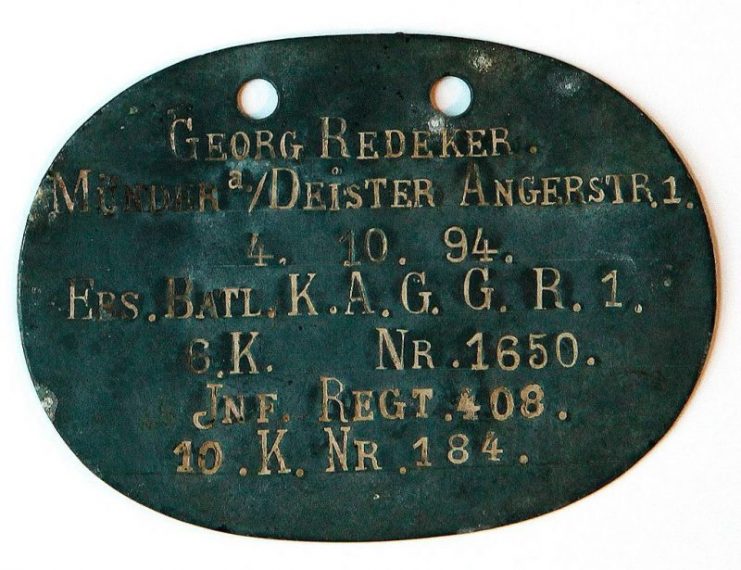
Soldiers started to write their name, unit, and hometown on pieces of paper they attached to their uniform. They would also use cloth ribbon or etch the information into the soft metal of their belt buckles. There are some accounts of soldiers taking the time to carve wooden discs which were tied to string and worn around the neck.
As the war continued, retailers and manufacturers noticed the need for these identification tags. Periodical publications such as Harper’s Weekly started to run adverts for Soldier Pins. These pins did not always carry the names of the soldiers wearing them.
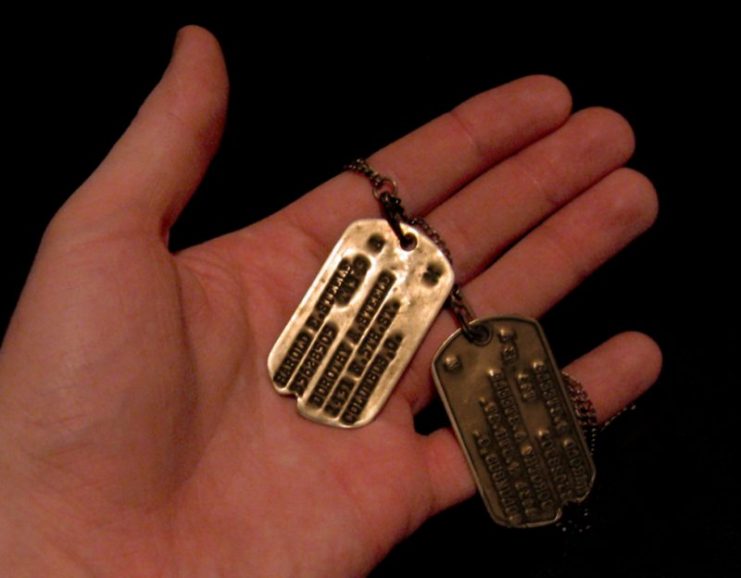
A famous example is that of Sergeant Amos Humiston of the 154th New York Infantry. He was killed in the Battle of Gettysburg and found holding a disc with an ambrotype of three children. When this was run by several newspapers, the disc was able to identify the fallen soldier.
After the Civil War, proposals for standard identification tags became more common. In 1899, the Quartermaster of Identification in the Philippines, Chaplin Charles C. Pierce, proposed that identification tags be part of the standard field pack for combat personnel.
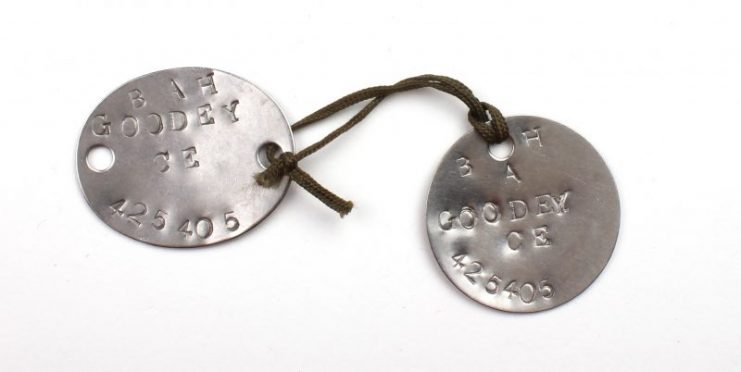
From the end of the war to 1906, the US government considered a range of identification systems. During these years, soldiers continued to make their own tags.
In 1906, the government was presented with a circular aluminum disc which held information about the soldier wearing it. This design was chosen for the first identification tags to be used by the US military. However, it would be seven years before the tags were made mandatory.
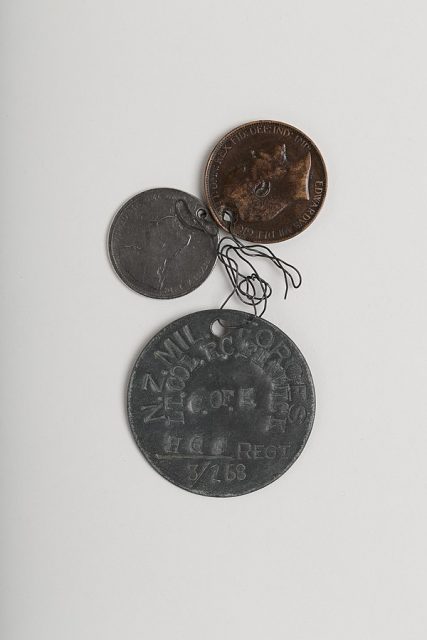
These circular tags continued to be used into the First World War. American soldiers were not the only ones with these tags as the French soldiers wore a plaque d’identité. These were metal discs on a bracelet which held the name of the soldier, their rank, and their formation.
When the United States entered the war, soldiers were provided with two circular tags. One of the tags would stay with the body and the second would be used to mark graves in battle zones. The circular tags of WWI would be replaced with rectangular tags similar to what we know today.
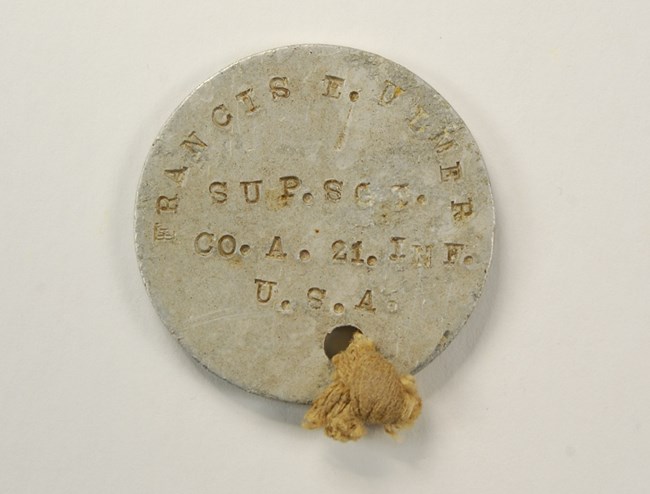
NPS Photo
During the Second World War, military personnel were provided with a rectangular identification tag that had a notch in the bottom edge. The notch was to help manufacturers align them when identification data was embossed. The amount of information on these tags had expanded from earlier ones and now include blood type, religion, and tetanus shot information.
The notch in the tags was later eliminated through the use of new embossing machines. The two tags were also placed on different chain lengths. During the Vietnam War, American dog tags had a rubber cover over them to silence the distinct noise they made when soldiers moved.
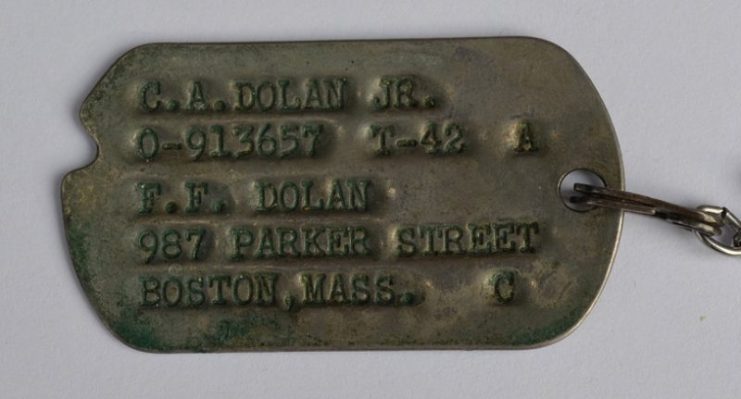
American style dog tags are now used across the globe. While they are officially called identification tags, dog tags are the name that most people know them by.
Read another story from us: Stalhelm Vs M1: Two of the Best Combat Helmets of World War II
This name is believed to date back to either the Prussian Army in 1870 or President Thomas Jefferson. Jefferson created the first dog licensing law which required identification tags for dogs which were similar to the original military dog tags. The Prussian Army had identification tags called “hundemarken” which literally translates to dog tag.
